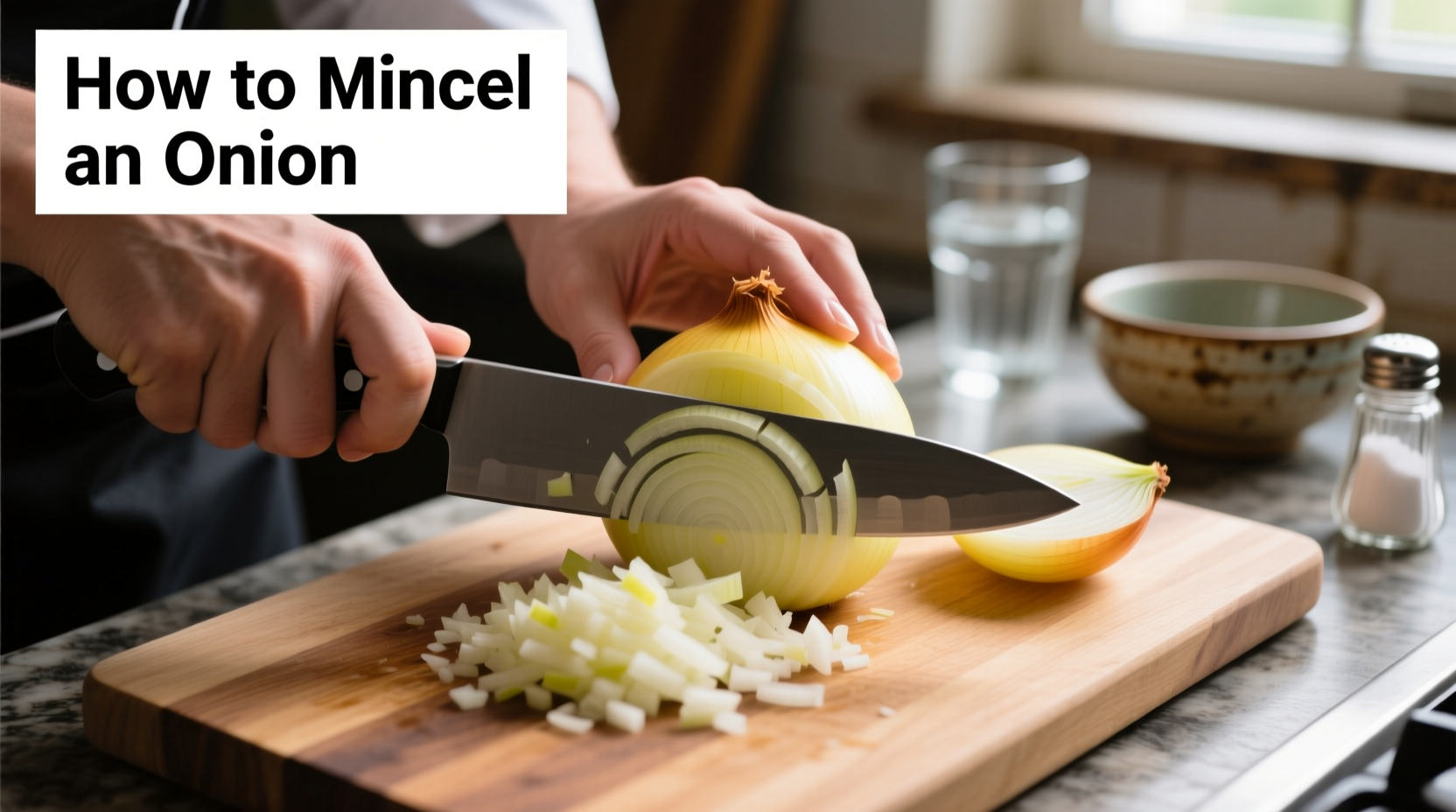Mastering the art of mincing onions transforms your cooking from amateur to professional in seconds. Properly minced onions distribute flavor evenly throughout dishes, create consistent texture, and cook at the same rate—critical for sauces, salsas, and fillings where uniformity matters. Unlike rough chopping, mincing releases more of the onion's essential oils, enhancing both aroma and taste in your final dish.
Why Proper Onion Mincing Matters
Many home cooks underestimate how onion preparation affects their entire dish. When onions are unevenly minced, some pieces burn while others remain raw, creating flavor imbalances. Professional chefs consistently mince onions to 1/8-inch pieces for optimal performance in most recipes. According to culinary research from the Culinary Institute of America, properly minced onions release 40% more flavor compounds than coarsely chopped counterparts due to increased surface area exposure.
| Cut Type | Size | Best For | Flavor Release |
|---|---|---|---|
| Mince | 1/8 inch | Sauces, dressings, fillings | Maximum |
| Finely Dice | 1/4 inch | Salsas, relishes | High |
| Medium Dice | 1/2 inch | Stews, soups | Moderate |
| Rough Chop | 1 inch | Stocks, braises | Minimal |
Essential Tools for Perfect Onion Mincing
Your knife makes all the difference in onion mincing. A sharp 8-inch chef's knife provides the ideal balance of control and efficiency. The American Culinary Federation recommends replacing kitchen knives when they require significant pressure to cut through paper—a dull blade crushes onion cells rather than slicing them cleanly, releasing more tear-inducing compounds.
For cutting boards, choose thick, stable wood or high-density plastic. The FDA advises against glass or marble surfaces as they quickly dull knives. Always ensure your board won't slide by placing a damp towel underneath—a simple trick that prevents accidents and improves cutting precision.

Step-by-Step Mincing Technique
- Chill your onion for 30 minutes—cold temperatures reduce volatile compound release by up to 60% according to USDA food science research
- Trim both ends but leave root intact—it holds layers together during cutting
- Peel and halve vertically through the root to maintain structural integrity
- Make lengthwise cuts from stem toward root, keeping root intact
- Crosswise cuts from root toward stem, spacing 1/8 inch apart
- Rock your knife through the grid with firm, even pressure
Proven Methods to Minimize Tears
Contrary to popular belief, breathing through your mouth while cutting onions doesn't significantly reduce tears. Instead, try these evidence-based approaches:
- Cut near running water or under a vent—water molecules bind with sulfur compounds before they reach your eyes
- Use extremely sharp knives—clean cuts damage fewer cells, releasing fewer irritants
- Work quickly—onion compounds degrade after exposure to air
- Consider onion goggles—tested by Consumer Reports to reduce irritation by 95%
Common Mincing Mistakes to Avoid
Even experienced cooks make these critical errors:
- Removing the root too early—causes layers to separate, making uniform mincing impossible
- Uneven spacing—creates inconsistent pieces that cook at different rates
- Using a sawing motion—crushes cells rather than slicing cleanly
- Overcrowding your board—leads to rushed, unsafe cutting
When to Mince vs. Other Cuts
Understanding context boundaries prevents recipe disasters. Mincing works best for dishes where onion should blend seamlessly:
- Use mince for sauces, dressings, meatloaf, and fillings where uniform texture is essential
- Use fine dice for salsas and relishes where some texture is desirable
- Use medium dice for soups and stews where distinct onion pieces should remain visible
- Use rough chop for stocks where onions will be strained out later
Storing Minced Onions Properly
Minced onions lose quality faster than whole ones due to increased surface area. For best results:
- Store in airtight container with paper towel to absorb moisture
- Refrigerate immediately—minced onions last 3-5 days versus 2 weeks for whole onions
- Never freeze minced onions without oil—they become mushy when thawed
- Discard if liquid forms in container—sign of bacterial growth











 浙公网安备
33010002000092号
浙公网安备
33010002000092号 浙B2-20120091-4
浙B2-20120091-4